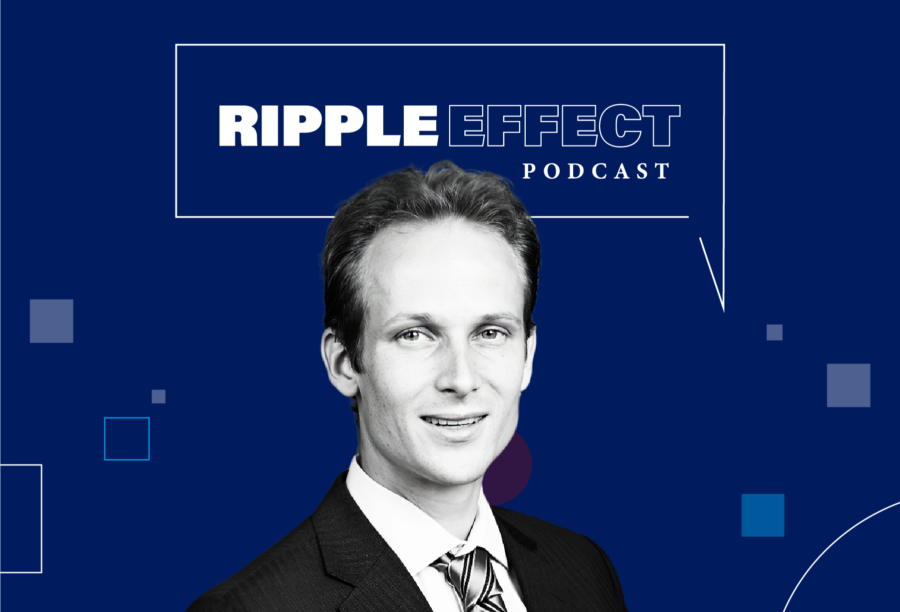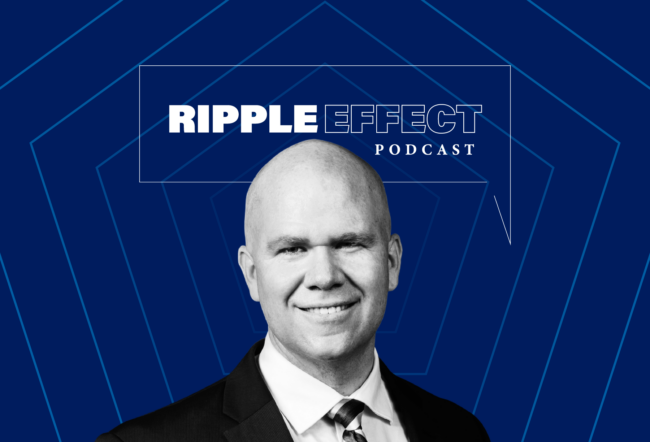Real-time electricity pricing, which fluctuates based on peak usage hours, can cut costs for both consumers and utilities, according to research from Wharton’s Arthur van Benthem. This episode is part of a series on “Innovation” that was produced in cooperation with Mack Institute for Innovation Management.
Transcript
Are Consumers Paying the Best Rate for Electricity?
Dan Loney: Well, another area of innovation to be looked at involves that in and around the energy sector — more specifically, electricity. Research takes a deeper dive into new ways to potentially charge consumers for the electricity they consume. Pleasure to be joined by Arthur van Benthem, who is an associate professor of business economics, and public policy here at the Wharton School. He’s been part of research looking into this. Arthur, great to talk to you. How are you today?
Arthur van Benthem: I’m doing fine. Thanks for asking.
Loney: Thank you. I guess let’s start with, what was the driver to look at this component of how consumers deal with the costs around the electricity they use?
Van Benthem: I’ve heard so many stories and energy podcasts about how great it would be if people charged their cars and maybe put their clothes in a dryer during hours when there’s lots of clean, cheap, renewable electricity. But then I thought to myself, I always pay the same price per kilowatt-hour of electricity. What’s in it for me? What incentive do I have to actually use electricity at the right time?
Loney: You talk about a mispricing component that’s out there in this industry. Meaning what, specifically?
Van Benthem: Let me start by saying that electricity is kind of a special product. It’s priced in a so-called “wholesale market”, where generators sell their power to large customers — you can think of a utility. The price in the market changes every few minutes, right? When demand is very low, then electricity is cheap. But all of a sudden, a couple hours later, perhaps when air conditioning demand is very high because the temperature has risen, prices can suddenly skyrocket, because we need expensive power plants to supply that power. But as end consumers, we don’t see any of that action. We just pay the same constant price of electricity. And that’s kind of the source of the mispricing. You always pay the same price for your power but in reality, the power is sometimes very cheap to generate, and sometimes it’s actually very, very expensive.
Loney: How much of a component are we talking about here, in terms of the annual costs associated with mispricing?
Van Benthem: That was one of the things that we tried to get a handle on in this study. Our estimates suggest that it is several billion dollars per year across the U.S. — probably much higher. I can get to that. But the main reason for the $2 billion is the flat pricing for end consumers, it leads to inefficient energy use. We use it at the wrong time of the day, right? So there are two things that are costly. One is, during peak hours and hot weather, the wholesale prices are very high for electricity. But consumers don’t have much of an incentive to adjust their thermostat settings and help the power system, so they consume way too much power exactly when it’s very expensive to generate.
On the flip side, there are also hours when electricity is very cheap — perfect to charge your electric vehicle. But you still pay that same flat price, or you’re not seeing that very low price in the wholesale market. So we’re also inefficiently not charging our cars and doing our clothes washing when it would be great to do so. That, all together, is a total loss of several billions a year
Loney: For the utilities, is this price fluctuation the biggest element that they have to deal with because of these conditions?
Van Benthem: Yes, indeed. We, as end consumers, are shielded from all those fluctuations in the wholesale market. The prices for electricity can be ten times as high in the late afternoon, compared to 2 a.m. But the utility, of course, faces that variation, so they can handle that in various ways. They can sign long-term power contracts with generators to hedge that price risk. But still, they need to buy some of their power on that wholesale market.
What happens — and has happened many times before — is that during extreme peak hours, when prices normally around $40 per megawatt-hour are suddenly $1000, utilities might find themselves buying at very high prices in that real-time market, but still only selling it to consumers at that fixed, much lower rate. It’s a real issue for utilities.
Can Real-time Pricing Fix the Issue?
Loney: What are some of the ideas that need to be considered, in terms of trying to find a solution that both sides see the benefit from this relationship?
Van Benthem: Well, there’s an idea that a lot of economists have proposed, which hasn’t gotten much traction yet. But it’s useful to start out with. It’s called real-time pricing, which is essentially letting consumers face that price that changes every five minutes. So that would suddenly tell me that it’s 5 p.m. in Philadelphia, and on August 21 it’s extremely hot outside. But now my power is very expensive. So instead of setting my thermostat to 70°F, I might set it to 74°F. And that’s a big difference.
The issue is that people don’t like unpredictable bills. If you don’t pay attention [and] you hadn’t really looked at your thermostat settings, [and all of a sudden] you get a bill at the end of the month and it turns out you consume power during really, really high price hours. And the extreme example was Texas a couple years ago, when there was this big winter storm. Texas doesn’t regulate prices very much, so some consumers who were unlucky enough to have signed up for one of those programs ended up paying a monthly power bill in excess of $10,000, because the wholesale price had spiked to $9,000 per megawatt-hour.
The other big issue with why this is so difficult to do in practice is that there’s vested interest. Generators love those high prices. And real-time pricing would probably make people a little bit more sensitive to them and might soften those peaks. There’s pushback from all kinds of sides.
Loney: Are we close to being able to do that in the first place, that idea of real-time pricing?
Van Benthem: Yeah. It’s not about technological barriers. You need an electricity meter that can sort of handle that [but] that’s not the biggest obstruction. What’s really hard is that people would need to pay active attention all the time to what is happening to the power price. How am I going to move my activities around during the day? And that’s where I think innovation in home automation software and smart EV charging is going to help. If an app could basically receive the real-time electricity price, and program for you when your car will be charged if you don’t need it to happen straight away. That will reduce the risk that people would be paying very high prices, not being aware they’re using that power. It should actually become quite a bit easier over time. Nevertheless, utilities have used very different pricing systems so far to try to approach it, which our study finds have not been very effective.
Loney: But for the consumer, it sounds like it would be a little bit of a challenge to deal with real-time pricing and understanding how the dynamics play here. It almost feels like you’d have to be watching your thermostat over the course of 24 hours to make sure you’re maximizing the benefits.
Van Benthem: In the beginning, you’d have to be very careful and tell your software what you’re willing to pay and what kind of rules it should use to handle it. But especially if you own an electric vehicle — that’s a huge percentage of your electricity bill. That’s typically something that can be charged at very low prices if you were in a real-time pricing plan, as long as you’re a little bit patient and are happy to charge it overnight, which most people would do anyway. People always worry about the high prices. But those plans also allow you to take advantage of very low prices, exactly because you have some electricity demand that you can schedule during those off-peak hours. I think it’s a real opportunity for a lot of people to also save money.
Loney: In terms of doing this research, were you able to determine that with some of these off-peak hours, there’s enough of a pattern that plays out so that people can understand that this would be a time that they can take advantage of this, on a frequent basis? Not just on maybe one day a month, but maybe all week, or five days out of a month. That they can develop a pattern with this.
Van Benthem: Yeah. That’s the way utilities have tried to tackle it so far, because the move to real-time pricing has been so hard. The most common approximations of real-time pricing — although they don’t get very close — is something called time-of-use pricing. It’s something along the lines of what you suggest. There might be a lower off-peak tariff that you have during the night [and] a peak tariff — could be late afternoon, for example. Then, because it’s only two tariffs, it’s not that hard to remember that you should charge your car outside of the peak hours.
Now, you can make those more sophisticated. Some utilities have actually introduced something like 20 different tiers. It varies by season. It varies by day of week, time of day, thinking that as long as you keep adding more and more of those tiers, you will approximate more and more closely what would happen if you put people on real-time pricing.
And what we find in this research, which is kind of surprising to us — and we got some generous help and research support from Wharton’s Mack Institute for Innovation — is that those pricing systems really only capture maybe 10% of the benefits that real-time pricing could achieve. It turns out you can estimate that last year, it happened to be that Tuesday afternoons had high prices. But then out of sample, projecting it into next year, you’re very often going to miss what’s happening the next year. In fact, the more categories you use, the more you over-fit the data, and the worse these systems perform. So the current trend that the utilities are trying doesn’t seem to solve the issue as much as real-time pricing could.
Loney: That’s what I was going to say next. It feels like, with all of these dynamics at play, that trying to find what the right formula is for both sides to benefit here, it’s still got a lot in the mix to truly understand what that path is going to be.
Van Benthem: Especially if you need to forecast it based on past data. It makes it very difficult, right? You’re going to get more alignment between the price that the consumer pays and the costs that it takes for generators to generate the power if you can set the price close to the actual event.
The second system that utilities have been playing with is called critical peak pricing. They say something like, “You pay this flat price most of the year, but we are allowed to call, say, 20 events every year.” [For example,] a day in advance, you get a text message saying “We anticipate prices to be very high tomorrow because it’s soaring temperatures.” You give people some advanced warning so they know that tomorrow they have to be careful during a certain time window, and they need to adjust their thermostat settings. Otherwise, they would pay a high price. Alternatively, utilities can subsidize them for reducing consumption — that’s the more carrots version, while the first one was the sticks version.
That system has been used throughout the U.S. The vast majority of people don’t have it, but some people do. And it seems like it can close about 10% of the gap between flat pricing and real-time pricing. But again, it doesn’t come close to something that directly connects the wholesale market with what consumers pay.
A Smarter Approach to Real-time Pricing
Loney: What are the ways that maybe need to be considered in order to increase that percentage of seeing benefit on real-time pricing as we move forward? And I’m guessing maybe technology is going to play a role in this. Innovation, obviously, but technology will play a role in this.
Van Benthem: To me, what was really interesting about the results that we found is that you could take the sharpest edges off of real-time pricing and say, “Let’s just have the price vary, you know, minute by minute, or as frequently as you want to. But let’s avoid these Texas stories, where people get totally caught by surprise, leading to really serious problems for the customers. So let’s just say that the price can vary, but up to some price cap.” And the price cap doesn’t even have to be that high. You could say if a typical wholesale market price is $40 [per megawatt-hour], you could set the price gap at $80 or $100, which is far removed from the craziness that we’ve seen in some of these markets.
It turns out that most of the time, the price still tracks the wholesale markets correctly. And that actually recovers about two-thirds of that gap. Of the $2 billion a year, you would get two-thirds back. When you run simulations with that, monthly bills are certainly not higher. If anything, they’re going to be lower. And the variation in those bills isn’t all that spectacular, either. So what we found in this research is that all this emphasis on extending time-of-use and critical peak pricing might be pushing really hard on levers that aren’t doing all that much. Whereas we could do a much more modest version of real-time pricing, which would lead to much bigger benefits. I think that’s what I would propose.



